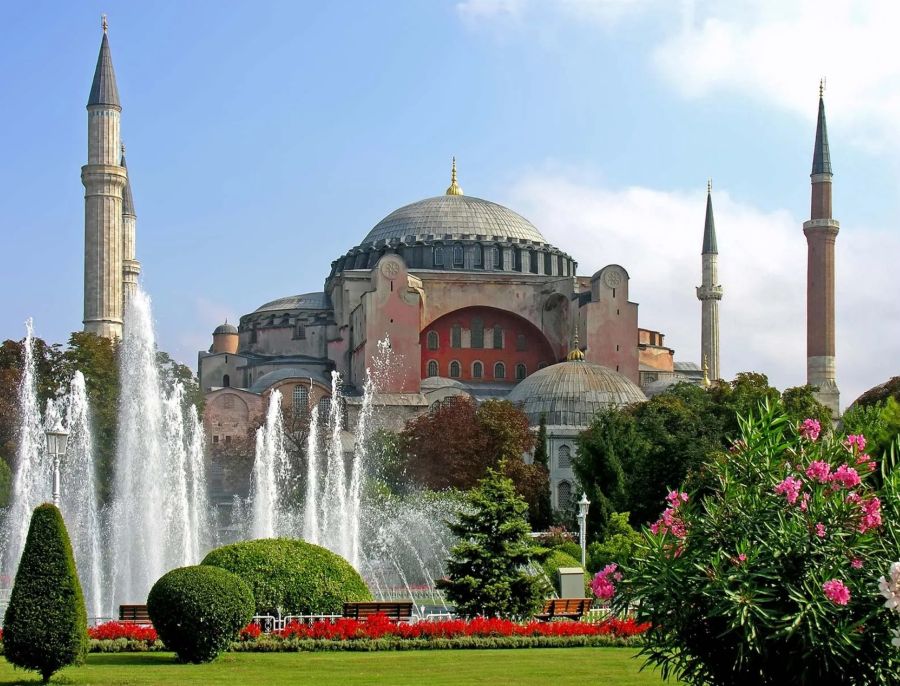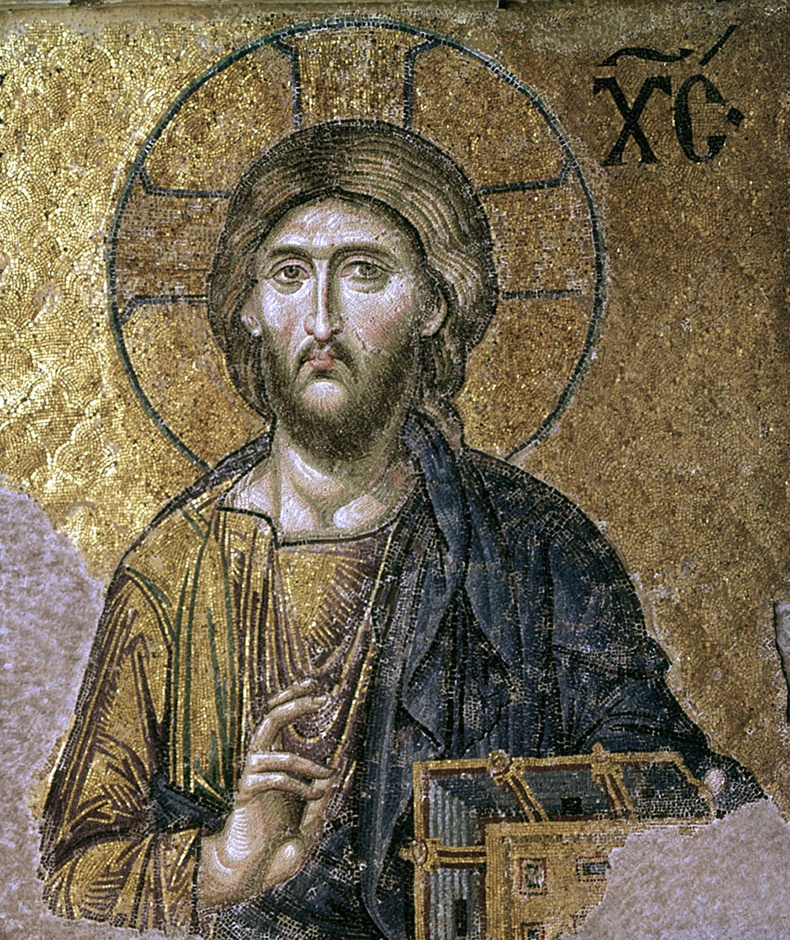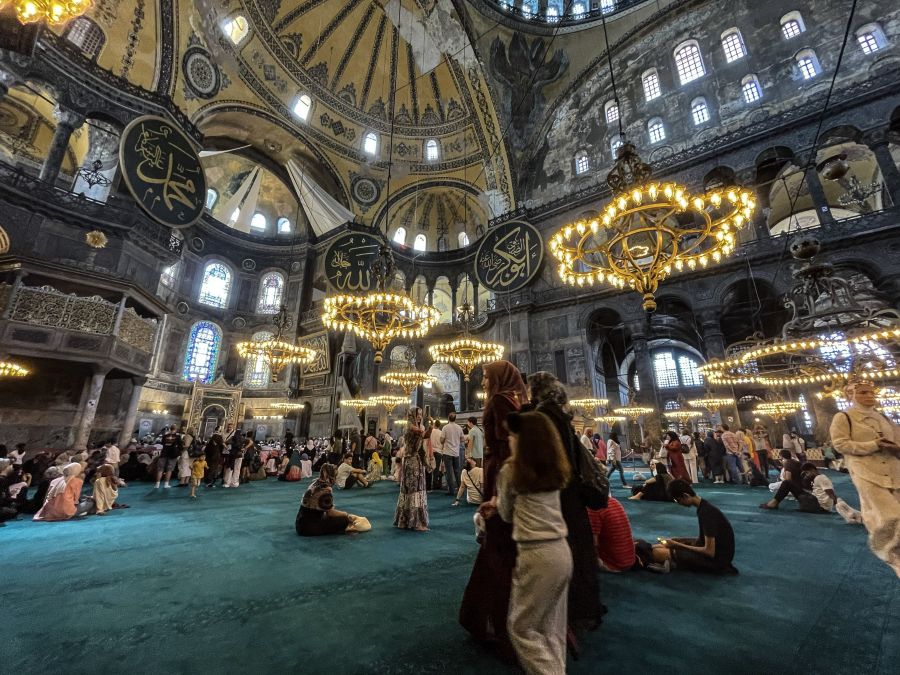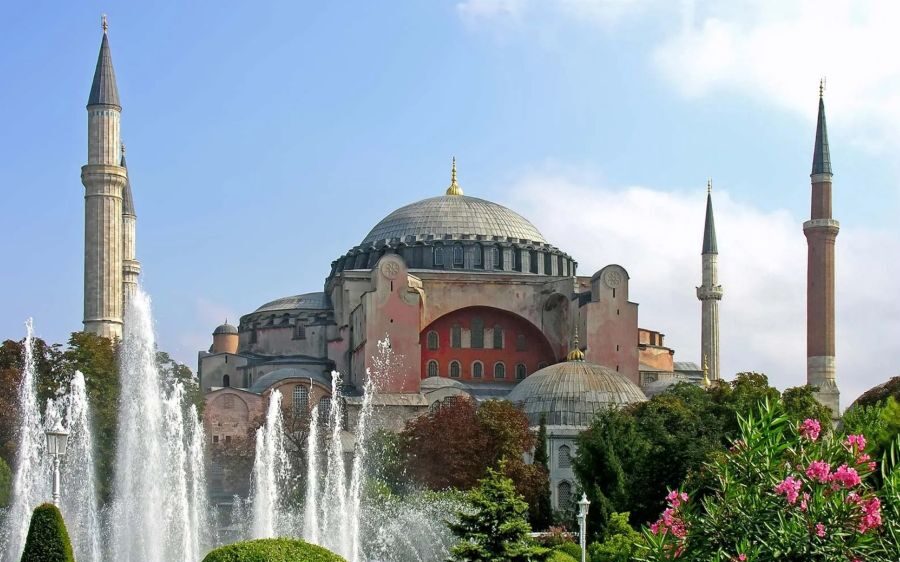Nestled in the heart of Istanbul’s historic peninsula, Hagia Sophia stands as one of the world’s most iconic architectural and cultural treasures. With its grand domes, intricate mosaics, and unparalleled history, it is a symbol of the city’s rich heritage and its place as a crossroads of civilizations.
A Journey Through Time

Hagia Sophia, which translates to “Holy Wisdom,” was originally built in 537 AD during the reign of Byzantine Emperor Justinian I. Designed by the architects Isidore of Miletus and Anthemius of Tralles, it was an engineering marvel of its time, boasting the largest dome in the world and a structure that seemed to defy gravity. For nearly a thousand years, it served as the foremost cathedral of the Byzantine Empire.
In 1453, following the conquest of Constantinople by Sultan Mehmed II, converted Hagia Sophia into a mosque. This transformation introduced Islamic elements such as the mihrab, minbar, and minarets, while preserving many of its original Byzantine features. It remained a mosque until 1935, when it was secularized and reopened as a museum under the order of Mustafa Kemal Atatürk, the founder of modern Turkey.
In 2020, Hagia Sophia underwent another transformation, reverting to its status as a mosque. Despite its changes in function, the structure has always remained open to visitors from around the world, continuing to inspire awe and admiration.
Architectural Splendor

Hagia Sophia’s architecture is a harmonious blend of Byzantine and Ottoman styles. The massive central dome, supported by pendentives and adorned with gold mosaics, creates a breathtaking sense of space and light. The interior is richly decorated with calligraphy, mosaics depicting Christian saints and scenes. Also Islamic inscriptions, reflecting its dual religious heritage.
One of Hagia Sophia most striking features is the Deesis Mosaic. A 13th-century masterpiece that portrays Christ flanked by the Virgin Mary and John the Baptist. The juxtaposition of such Christian imagery with Islamic calligraphy, including the names of Allah and Prophet Muhammad, symbolizes the unity and coexistence of diverse cultures over the centuries.
A Cultural and Spiritual Symbol
Hagia Sophia’s significance extends beyond its architectural grandeur. It has been a center of religious, political, and cultural life for nearly 1,500 years. As a cathedral, it was the seat of the Patriarch of Constantinople and a pivotal site for Orthodox Christianity. As a mosque, it became a cornerstone of Islamic worship in the Ottoman Empire.
Today, Hagia Sophia continues to draw millions of visitors annually. Its status as a UNESCO World Heritage Site underscores its global importance as a cultural and historical monument. Whether you’re marveling at its vast dome, exploring its mosaics, or simply soaking in its serene atmosphere, Hagia Sophia offers a profound connection to the past.

Practical Information for Visitors
Hagia Sophia is located in the Sultanahmet district, easily accessible by public transportation. Visitors should be mindful that it functions as an active mosque, so please have modest clothing. Also visitors can not visit ground level as it is the praying area. Admission is 25 Euro and tickets are available at the ticket office outside of Hagia Sophia.

To avoid ticket line – you can contact with Bosphorus Gate Travel Agency
Conclusion
Hagia Sophia is more than just a building; it is a testament to Istanbul’s enduring legacy as a bridge between East and West, past and present. Whether you’re a history enthusiast, an architecture lover, or a spiritual seeker, this magnificent structure promises an unforgettable experience. Make sure to add it to your itinerary and witness the timeless beauty of Hagia Sophia for yourself.
Back to Home Page

